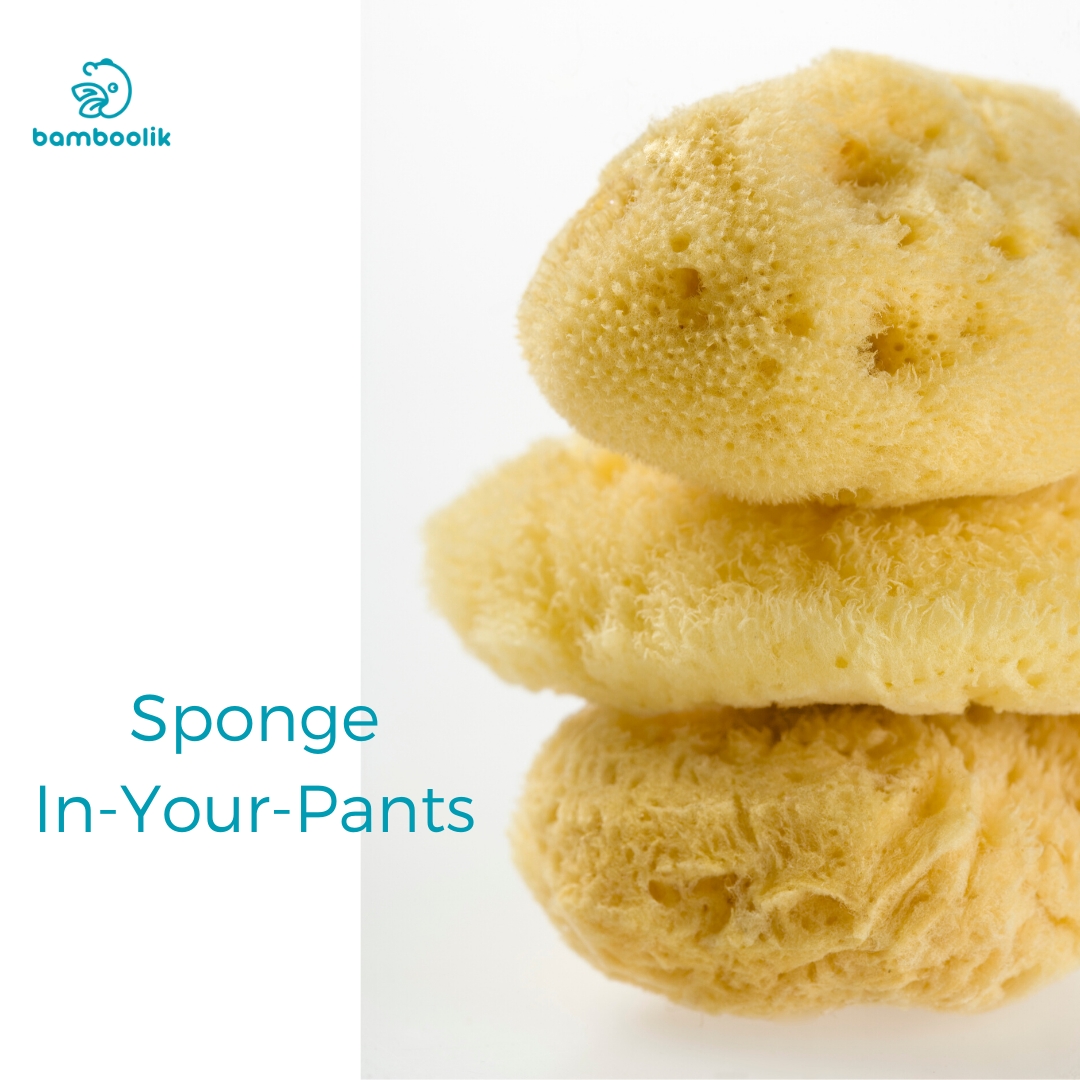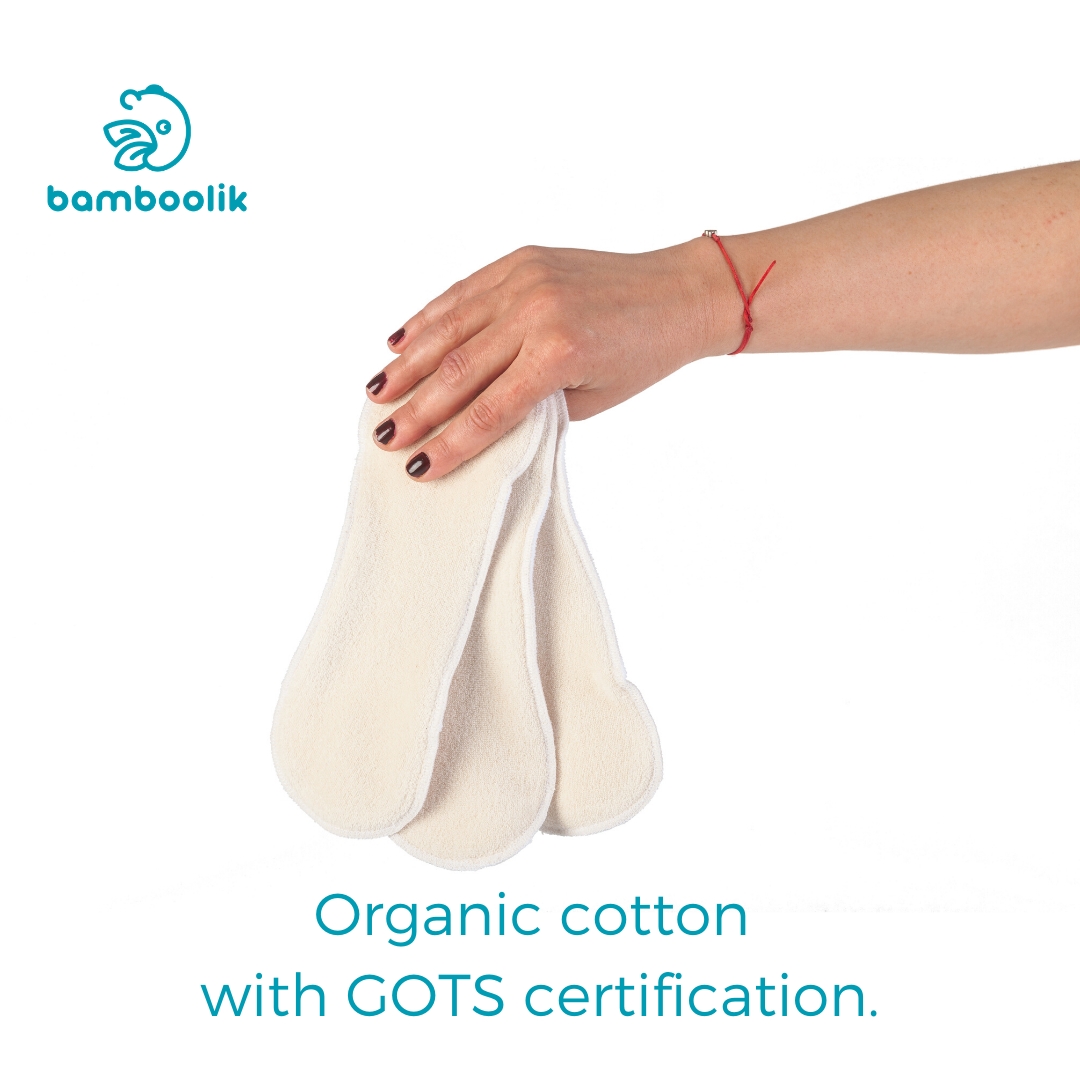Don’t be an average 150kg woman!
One woman, using solely disposable menstrual products, creates approx. 150 kg of non-biodegradable waste in used menstrual items.
While it’s certainly less waste than a ton of used disposable diapers (created by one tiny baby throughout their diaper period), it’s still a remarkable amount. And not sustainable. 150 kg is more than most women weigh - who wants to produce a pile of non-biodegradable waste bigger than them?

Sustainable menstruation is possible! There are many reusable menstrual items to choose from.
Before we start looking at individual options, you need to ask yourself this question: Do I prefer menstrual pads to tampons or the other way round? Because in case you can’t stand using tampons, you probably won’t like more advanced versions of „internal“ menstrual protection.
Sustainable internal protection
The best option for us „insiders“! A true game changer for a lot of women as they have to wash the cup only twice a day (mornings and evenings) and that’d be it. You can do anything while the cup is in – you can go for a run, for a swim, you can even practice yoga. The only con of the cup is that putting it in takes a bit of practice. But don’t worry, once you find the right knack, you won’t even think about it! (However, the slightly tricky application is why we wouldn’t recommend the cup to very young girls who have just recently started their period.)
Menstrual (sea) sponge
Organic menstruation is actually a thing! Menstrual sponges don’t wear squarepants J but they do share a sponge’s greatest quality – they absorb liquids. Menstrual sponges are porous sea creatures (long dead when you lay your hands on them, don’t worry) Rumour has it that sponges were Cleopatra’s saviours during her days, back in ancient Egypt.
Because sponges are truly organic, their bio-degradability is unbeatable. With sponges, you literally don’t create any extra waste at all.
On the other hand, due to its organic origins, longevity of a menstrual sponge is much shorter (compared to a menstrual cup made of silicone). One sponge will last you approx. 6 months and you need multiple sponges to cover your entire menstrual cycle (as opposed to one cup). Sponges also need to be changed more often than a cup (but usually less often than regular tampons).
Same as with a menstrual cup, putting a sea sponge in place and taking it out takes a bit of practice. A sponge needs to be rinsed and washed after each use (which is something you probably won’t want to do in public bathrooms, for example).
The biggest pro of a sponge could be considered quite personal (so much that we almost decided not to mention it here at first ). A sponge doesn’t get in the way of, errr, how to put it gently, ….. let’s say pleasant activities with your partner? You don’t have to take it out during…. and you know what, let’s leave the rest to your imagination.
Both menstrual cup and sea sponge do not dry out the skin and other areas of your lady parts (in comparison to disposable „internal“ menstrual items). They’re a great prevention against mycoses, inflammations etc. (that could often be caused by an unnatural dryness). In addition, these alternative "internal" menstrual items lower the risk of TSS (toxic shock syndrome) that could be caused by tampons. Did you know that a famous model Lauren Wasser lost both her legs because of that?
For those who prefer „outer“ menstrual protection:
Easy solution – reusable and washable menstrual pads. In case you used cloth diapers for your baby – didn’t you wonder whether the comfort of cloth could work for you, too?
The only con of washable menstrual pads is, you’d never guess it, the washing ... But that’s forgiven by these many pros:
- Cloth menstrual pads are incredibly comfortable. Especially if you choose natural materials. Cotton is great, organic cotton is even better.
- Breathability! Cloth pads, made of natural fibres like cotton, are much more breathable than disposable menstrual items, made of artificial materials (mostly plastic). Perfect for women suffering from inflammations that keep coming back. Even during hot summer days, you’ll never feel suffocated in your knickers area.
- Cloth menstrual pads don’t dry out your lady parts.
The most advanced method: Free menstruation
Definitely not for everyone. Practiced best in the comfort of your home, not recommended during any sport activities. Suitable for sensitive women, most likely not doable if you’re a young girl just learning about your body.
Saving not just the planet but your budget, too!
In case you decide to convert to reusable menstrual items, your drugstore budget will definitely shrink. One menstrual cup will cost you approx. a half of your yearly budget for tampons. Similar with disposable vs washable pads.
Let’s join the tribe!
We would never go back to tampons or disposable pad as we don’t want to be the average 150 kg of waste. We just feel much better when we use reusable alternatives, not only because of the environment but our lady parts like it better, too.
What about you?




